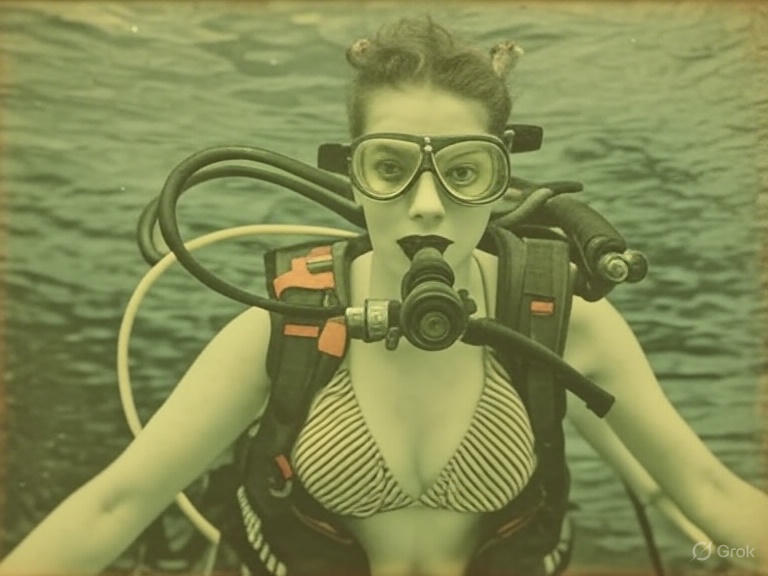The Most Terrifying Job You've Never Heard Of: Saturation Diving
Saturation diving is one of the most extreme and dangerous professions in the world. Mario Nawfal's viral tweet and accompanying video offer a chilling glimpse into the lives of divers who earn up to $300,000 annually while working in absolute darkness, crushing pressure, and total isolation.
The Depths of Darkness
Saturation divers descend into the ocean's pitch-black depths, often reaching 1,000 feet underwater, where light barely penetrates and the pressure is immense. Visibility is minimal, silence is overwhelming, and every movement is potentially life-threatening. As the tweet notes, “something massive might be circling just outside your headlamp’s glow,” emphasizing the constant presence of unknown dangers.
THE MOST TERRIFYING JOB YOU’VE NEVER HEARD OF
— Mario Nawfal (@MarioNawfal) September 28, 2025
Saturation divers earn up to $300,000/year to drop 1,000 feet into black, freezing ocean - where visibility is zero, the silence is deafening, and something massive might be circling just outside your headlamp’s glow.
They weld… pic.twitter.com/tWxh4GlBZ4
Job Responsibilities
These divers are not thrill-seekers—they perform critical underwater operations for the oil and gas industry. Their tasks include:
- Welding pipelines and underwater equipment
- Repairing and maintaining oil rigs
- Installing and servicing critical subsea infrastructure
Operating in near-zero visibility and freezing temperatures, they rely entirely on headlamps and precision skills to avoid accidents.
Life in Isolation
A defining feature of saturation diving is living in a pressurized metal tube called a diving bell. This setup allows divers to remain at depth for weeks without decompressing after every shift. While essential for safety, it means divers live in complete isolation, cut off from sunlight and the outside world. The physical and mental strain of this lifestyle is enormous.
Risks and Rewards
Saturation diving is not just challenging—it’s life-threatening. Some key risks include:
- Extreme pressure: The water exerts millions of pounds of force on the body.
- Limited visibility: Large marine animals or equipment hazards can appear unexpectedly.
- Health risks: Long-term exposure to high-pressure environments can cause decompression sickness and other complications.
Despite these dangers, the financial reward is significant, with salaries reaching $300,000 per year, though taxes can reduce the actual take-home pay.
The Human Element
The profession demands both mental resilience and physical strength. Divers describe feeling the water move past them, sometimes sensing massive creatures nearby. Continuous alertness, isolation, and exhaustion are part of daily life, making it one of the most mentally taxing jobs globally.
FAQs About Saturation Diving
Q1: What is saturation diving?
A: Saturation diving is a technique that allows divers to work at great depths for extended periods by living in a pressurized environment, reducing decompression time.
Q2: How dangerous is saturation diving?
A: It’s extremely dangerous due to crushing pressures, isolation, limited visibility, and potential encounters with underwater hazards.
Q3: How much do saturation divers earn?
A: Annual salaries can reach up to $300,000, depending on experience and company contracts.
Q4: Where do saturation divers work?
A: Primarily in the oil and gas industry, maintaining underwater pipelines, rigs, and infrastructure.
Q5: How long can divers stay underwater?
A: Divers may remain underwater for weeks at a time using a pressurized diving bell system.
Conclusion
Saturation diving showcases human endurance at its extreme. It is a profession few understand, yet it is indispensable for maintaining underwater infrastructure critical to the global economy. While the dangers are immense, the dedication and courage of these divers are unmatched. Mario Nawfal’s tweet and video offer a rare window into a hidden world where survival depends on skill, vigilance, and nerves of steel.
In an age where most of us take the underwater world for granted, saturation divers remind us of the invisible risks people endure for energy, technology, and progress. This job is not just terrifying—it’s a testament to human resilience and the lengths we will go to in the pursuit of survival and livelihood.


0 comments